Itinerary
In 1853, a fleet of four American warships under Commodore Matthew Perry sailed into the bay of Tokyo (then Edo) and presented the reluctant Japanese with the demands of the U.S. government for the opening of diplomatic and commercial relations. The following year Perry returned and first set foot on Japanese soil at Yokohama—then a small fishing village on the mudflats of Tokyo bay. Two years later New York businessman Townsend Harris became America’s first diplomatic representative to Japan. In 1858 he was finally able to negotiate a commercial treaty between the two countries; part of the deal designated four locations—one of them Yokohama—as treaty ports. In 1859 the shogunate created a special settlement in Yokohama for the growing community of merchants, traders, missionaries, and other assorted adventurers drawn to this exotic new land of opportunity. The foreigners (predominantly Chinese and British, plus a few French, Americans, and Dutch) were confined here to a guarded compound about 5 square km (2 square miles)—placed, in effect, in isolation—but not for long. Within a few short years the shogunal government collapsed, and Japan began to modernize. Western ideas were welcomed, as were Western goods, and the little treaty port became Japan’s principal gateway to the outside world. In 1872 Japan’s first railway was built, linking Yokohama and Tokyo. In 1889 Yokohama became a city; by then the population had grown to some 120,000. As the city prospered, so did the international community and by the early 1900s Yokohama was the busiest and most modern center of international trade in all of East Asia. Then Yokohama came tumbling down. On September 1, 1923, the Great Kanto Earthquake devastated the city. The ensuing fires destroyed some 60,000 homes and took more than 40,000 lives. During the six years it took to rebuild the city, many foreign businesses took up quarters elsewhere, primarily in Kobe and Osaka, and did not return. Over the next 20 years Yokohama continued to grow as an industrial center—until May 29, 1945, when in a span of four hours, some 500 American B-29 bombers leveled nearly half the city and left more than half a million people homeless. When the war ended, what remained became—in effect—the center of the Allied occupation. General Douglas MacArthur set up headquarters here, briefly, before moving to Tokyo; the entire port facility and about a quarter of the city remained in the hands of the U.S. military throughout the 1950s. By the 1970s Yokohama was once more rising from the debris; in 1978 it surpassed Osaka as the nation’s second-largest city, and the population is now inching up to the 3.5 million mark. Boosted by Japan’s postwar economic miracle, Yokohama has extended its urban sprawl north to Tokyo and south to Kamakura—in the process creating a whole new subcenter around the Shinkansen Station at Shin-Yokohama. The development of air travel and the competition from other ports have changed the city’s role in Japan’s economy. The great liners that once docked at Yokohama’s piers are now but a memory, kept alive by a museum ship and the occasional visit of a luxury vessel on a Pacific cruise. Modern Large as Yokohama is, the central area is very negotiable. As with any other port city, much of what it has to offer centers on the waterfront—in this case, on the west side of Tokyo Bay. The downtown area is called Kannai (literally, “within the checkpoint”); this is where the international community was originally confined by the shogunate. Though the center of interest has expanded to include the waterfront and Ishikawa-cho, to the south, Kannai remains the heart of town. Think of that heart as two adjacent areas. One is the old district of Kannai, bounded by Basha-michi on the northwest and Nippon-odori on the southeast, the Keihin Tohoku Line tracks on the southwest, and the waterfront on the northeast. This area contains the business offices of modern Yokohama. The other area extends southeast from Nippon-odori to the Moto-machi shopping street and the International Cemetery, bordered by Yamashita Koen and the waterfront to the northeast; in the center is Chinatown, with Ishikawa-cho Station to the southwest. This is the most interesting part of town for tourists. Whether you’re coming from Tokyo, Nagoya, or Kamakura, make Ishikawa-cho Station your starting point. Take the South Exit from the station and head in the direction of the waterfront.
White-sand city beaches and hot-spring resorts may not be everyone’s first image of Korea, but these are what Koreans flock to Busan for all year. And there are plenty of opportunities for rest, relaxation, retail therapy, and even a touch of glamour every October with the Busan International Film Festival. Busan’s beaches are the big summertime draw but there is plenty to be seen year round. Quintessential experiences include taking some rest and relaxation at a local spa and exploring the Beomeosa temple complex.
Sakaiminato is a small city almost totally surrounded by water: the Sea of Japan to the east, the Sakai Channel to the north and Lake Nakaumi to the west. Across the lake the towns of Matsue and Yasugi offer interesting experiences. Matsue is known as the “Town of Water” next to scenic Lake Shinji and Lake Nakaumi. It has one of the very few wooden castles that still remain in Japan. Touring the castle and boat rides on the Horikawa River and the castle’s moat are popular. Yasugi has the Adachi Museum of Art, a private museum that houses one of the finest collections of contemporary Japanese paintings, but also has a 165,000 square metres garden –with plants and rocks collected by the museum’s founder. Six different gardens show different scenarios depending on the season. These gardens have been selected as “Japan’s best garden” for several years.
Maizuru port is considered as the gateway to the Japanese most popular historic city, Kyoto. Why don’t you relax on the coach to save your energy for your exciting day in Kyoto? Kyoto used to be the capital of Japan in the 8th century, and it was the centre for politics, economy and culture for more than 1,000 years. After capital functions were transferred to Tokyo in the middle of 19th century, luckily Kyoto did not lose its lustre. As soon as you step into the city, you will see how hard the local people tried to keep the atmosphere of the heyday. Nowadays, Kyoto is not the centre of attention within Japan anymore; nonetheless it is indeed the centre of tourism industry. There are seventeen historic sites such as Nijo castle and Kinkakuji temple which were designated a World Heritage Site. There are also numerous sites which can be seen from your coach, so please keep your eyes wide open while you are in Kyoto!
Maizuru port is considered as the gateway to the Japanese most popular historic city, Kyoto. Why don’t you relax on the coach to save your energy for your exciting day in Kyoto? Kyoto used to be the capital of Japan in the 8th century, and it was the centre for politics, economy and culture for more than 1,000 years. After capital functions were transferred to Tokyo in the middle of 19th century, luckily Kyoto did not lose its lustre. As soon as you step into the city, you will see how hard the local people tried to keep the atmosphere of the heyday. Nowadays, Kyoto is not the centre of attention within Japan anymore; nonetheless it is indeed the centre of tourism industry. There are seventeen historic sites such as Nijo castle and Kinkakuji temple which were designated a World Heritage Site. There are also numerous sites which can be seen from your coach, so please keep your eyes wide open while you are in Kyoto!
The capital of the Ishikawa Prefecture, Kanazawa once rivalled Kyoto and Edo (Tokyo) as a town rich in cultural achievements. Kanazawa escaped destruction during World War II and accordingly has been able to preserve many of the old districts in good shape. The city is famous because of Kenrokuen. Located next to Kanazawa Castle, Kenrokuen is classified as “One of the Three Gardens of Japan”. The garden has an artificial pond, and hills and houses are dotted within the 11.4 hectares. It has Japan’s oldest fountain using natural water pressure and a tea-house dating back to 1774. Close by is the Higashi Chaya Gai Geisha District, designated a National Cultural Asset and the biggest of the Geisha districts of Kanazawa. Some of the houses not only retain the original structure, but still are used as Geisha houses. Some of the streets have traditional shops creating a nostalgic atmosphere. Kanazawa is also known for its lacquer ware, Kutani-style pottery, gold-leaf workmanship and delicately painted silk kimonos.
Niigata city is the capital of Niigata prefecture and faces the Japan Sea on the island of Honshu, the largest of the four islands that comprise Japan. With a population of 810,000, Niigata is the largest Honshu city along the Japan Sea coast. The city is located at 300 km northwest of Tokyo and the bullet train would take you there in only two hours. Niigata offers four distinct seasons throughout the year, and people may find the winter season to be the best time to visit as many people would come for winter sports such as skiing or snowboarding. However, you will find the place abundantly beautiful throughout the year as well. Niigata is famous for growing rice as well as fresh seafood. If you try white rice without any seasonings, you would be able to taste the difference and appreciate its flavour. Thanks to the quality of the rice, they produce great Sake in the area. If you have time, why don’t you extend your journey to one of the famous Sake Brewery?
Facing out on two bays, Hakodate is a 19th-century port town, with clapboard buildings on sloping streets, a dockside tourist zone, streetcars, and fresh fish on every menu. In the downtown historic quarter, a mountain rises 1,100 feet above the city on the southern point of the narrow peninsula. Russians, Americans, Chinese, and Europeans have all left their mark; this was one of the first three Japanese ports the Meiji government opened up to international trade in 1859. The main sights around the foot of Mt. Hakodate can be done in a day, but the city is best appreciated with an overnight stay for the illumination in the historic area, the night views from either the mountain or the fort tower, and the fish market at dawn. City transport is easy to navigate and English information is readily available. Evening departure trains from Tokyo arrive here at dawn—perfect for fish-market breakfasts.
Aomori’s main event is its Nebuta Matsuri Festival,held August 2 to 7. People come to see illuminated floats of gigantic samurai figures paraded through the streets at night. Aomori’s festival is one of Japan’s largest, and is said to celebrate the euphoria of post-battle victory, and is thus encouraged to be noisier and livelier than you may have been exposed to in other Japanese festivals. Dancers, called heneto, run alongside the floats, dancing crazily, and you’re encouraged to join in. Throughout the year you can enjoy delicious seafood from Aomori Bay, including Oma no Maguro (tuna of Oma), as well as delicious fruits and vegetables (particularly garlic). And come every summer, the town cuts loose to throw the decidedly wild Nebuta Matsuri festival, a frenzied, utterly unaccountable period when normal gets thrown to the wind.
In 1853, a fleet of four American warships under Commodore Matthew Perry sailed into the bay of Tokyo (then Edo) and presented the reluctant Japanese with the demands of the U.S. government for the opening of diplomatic and commercial relations. The following year Perry returned and first set foot on Japanese soil at Yokohama—then a small fishing village on the mudflats of Tokyo bay. Two years later New York businessman Townsend Harris became America’s first diplomatic representative to Japan. In 1858 he was finally able to negotiate a commercial treaty between the two countries; part of the deal designated four locations—one of them Yokohama—as treaty ports. In 1859 the shogunate created a special settlement in Yokohama for the growing community of merchants, traders, missionaries, and other assorted adventurers drawn to this exotic new land of opportunity. The foreigners (predominantly Chinese and British, plus a few French, Americans, and Dutch) were confined here to a guarded compound about 5 square km (2 square miles)—placed, in effect, in isolation—but not for long. Within a few short years the shogunal government collapsed, and Japan began to modernize. Western ideas were welcomed, as were Western goods, and the little treaty port became Japan’s principal gateway to the outside world. In 1872 Japan’s first railway was built, linking Yokohama and Tokyo. In 1889 Yokohama became a city; by then the population had grown to some 120,000. As the city prospered, so did the international community and by the early 1900s Yokohama was the busiest and most modern center of international trade in all of East Asia. Then Yokohama came tumbling down. On September 1, 1923, the Great Kanto Earthquake devastated the city. The ensuing fires destroyed some 60,000 homes and took more than 40,000 lives. During the six years it took to rebuild the city, many foreign businesses took up quarters elsewhere, primarily in Kobe and Osaka, and did not return. Over the next 20 years Yokohama continued to grow as an industrial center—until May 29, 1945, when in a span of four hours, some 500 American B-29 bombers leveled nearly half the city and left more than half a million people homeless. When the war ended, what remained became—in effect—the center of the Allied occupation. General Douglas MacArthur set up headquarters here, briefly, before moving to Tokyo; the entire port facility and about a quarter of the city remained in the hands of the U.S. military throughout the 1950s. By the 1970s Yokohama was once more rising from the debris; in 1978 it surpassed Osaka as the nation’s second-largest city, and the population is now inching up to the 3.5 million mark. Boosted by Japan’s postwar economic miracle, Yokohama has extended its urban sprawl north to Tokyo and south to Kamakura—in the process creating a whole new subcenter around the Shinkansen Station at Shin-Yokohama. The development of air travel and the competition from other ports have changed the city’s role in Japan’s economy. The great liners that once docked at Yokohama’s piers are now but a memory, kept alive by a museum ship and the occasional visit of a luxury vessel on a Pacific cruise. Modern Large as Yokohama is, the central area is very negotiable. As with any other port city, much of what it has to offer centers on the waterfront—in this case, on the west side of Tokyo Bay. The downtown area is called Kannai (literally, “within the checkpoint”); this is where the international community was originally confined by the shogunate. Though the center of interest has expanded to include the waterfront and Ishikawa-cho, to the south, Kannai remains the heart of town. Think of that heart as two adjacent areas. One is the old district of Kannai, bounded by Basha-michi on the northwest and Nippon-odori on the southeast, the Keihin Tohoku Line tracks on the southwest, and the waterfront on the northeast. This area contains the business offices of modern Yokohama. The other area extends southeast from Nippon-odori to the Moto-machi shopping street and the International Cemetery, bordered by Yamashita Koen and the waterfront to the northeast; in the center is Chinatown, with Ishikawa-cho Station to the southwest. This is the most interesting part of town for tourists. Whether you’re coming from Tokyo, Nagoya, or Kamakura, make Ishikawa-cho Station your starting point. Take the South Exit from the station and head in the direction of the waterfront.
Facing out on two bays, Hakodate is a 19th-century port town, with clapboard buildings on sloping streets, a dockside tourist zone, streetcars, and fresh fish on every menu. In the downtown historic quarter, a mountain rises 1,100 feet above the city on the southern point of the narrow peninsula. Russians, Americans, Chinese, and Europeans have all left their mark; this was one of the first three Japanese ports the Meiji government opened up to international trade in 1859. The main sights around the foot of Mt. Hakodate can be done in a day, but the city is best appreciated with an overnight stay for the illumination in the historic area, the night views from either the mountain or the fort tower, and the fish market at dawn. City transport is easy to navigate and English information is readily available. Evening departure trains from Tokyo arrive here at dawn—perfect for fish-market breakfasts.
Kushiro, known as the “town of mist”, is situated in the south eastern part of Hokkaido. With about 200,000 inhabitants, it is the largest city in the region and the base for deep-sea fishing. The marine products industry of Kushiro has flourished since the early 20 th century and many streets of this port town retain features of this era. Thanks to its strategic location on Hokkaido’s Eastern Pacific seaboard and the area’s only ice free port, Kushiro is experiencing steady growth as an important economic, social and cultural centre. A literary atmosphere can be attributed to the poet and novelist Takuboku Ishikawa, who lived here in the early 20th century. To the north of Kushiro lies one of its most renowned attractions, the Kushiro Shitsugen, Japan’s largest marshland. Stretching out over the majority of the Kushiro Plain, it accounts for 60 percent of Japan’s wetland and was designated to become the country’s 28th National Park in 1987. As the marsh is considered one of the greatest treasure houses of flora and fauna in Japan, its protection, preservation and wise use are promoted by a national agreement. Equally famous is the marshland as the habitat of the Tancho (Japanese Crane). At one time, it could be seen in many places in Japan, but their numbers dwindled in the Meiji Era due to over hunting and environmental changes. In the late 19 th century, the cranes were thought to be almost extinct. Then several dozens cranes were discovered in the depths of the Kushiro Shitsugen, and after establishing special crane reserves, the birds rehabilitation has succeeded.
Today, commercial fishing is king in Kodiak. Despite its small population—about 6,475 people scattered among the several islands in the Kodiak group—the city is among the busiest fishing ports in the United States. The harbor is also an important supply point for small communities on the Aleutian Islands and the Alaska Peninsula.Visitors to the island tend to follow one of two agendas: either immediately fly out to a remote lodge for fishing, kayaking, or bear viewing; or stay in town and access whatever pursuits they can reach from the limited road system. If the former is too pricey an option, consider combining the two: drive the road system to see what can be seen inexpensively, then add a fly-out or charter-boat excursion to a remote lodge or wilderness access point.Floatplane and boat charters are available from Kodiak to many remote attractions, chief among them the Kodiak National Wildlife Refuge , which covers four islands in the Gulf of Alaska: Kodiak, Afognak, Ban, and Uganik.
Ketchikan is famous for its colorful totem poles, rainy skies, steep–as–San Francisco streets, and lush island setting. Some 13,500 people call the town home, and, in the summer, cruise ships crowd the shoreline, floatplanes depart noisily for Misty Fiords National Monument, and salmon-laden commercial fishing boats motor through Tongass Narrows. In the last decade Ketchikan’s rowdy, blue-collar heritage of logging and fishing has been softened by the loss of many timber-industry jobs and the dramatic rise of cruise-ship tourism. With some effort, though, visitors can still glimpse the rugged frontier spirit that once permeated this hardscrabble cannery town. Art lovers should make a beeline for Ketchikan: the arts community here is very active. Travelers in search of the perfect piece of Alaska art will find an incredible range of pieces to choose from.The town is at the foot of 3,000-foot Deer Mountain, near the southeastern corner of Revillagigedo (locals shorten it to Revilla) Island. Prior to the arrival of white miners and fishermen in 1885, the Tlingit used the site at the mouth of Ketchikan Creek as a summer fish camp. Gold discoveries just before the turn of the 20th century brought more immigrants, and valuable timber and commercial fishing resources spurred new industries. By the 1930s the town bragged that it was the “salmon-canning capital of the world.” You will still find some of Southeast’s best salmon fishing around here. Ketchikan is the first bite of Alaska that many travelers taste. Despite its imposing backdrop, hillside homes, and many staircases, the town is relatively easy to walk through. Favorite downtown stops include the Spruce Mill Development shops and Creek Street. A bit farther away you’ll find the Totem Heritage Center. Out of town (but included on most bus tours) are two longtime favorites: Totem Bight State Historical Park to the north and Saxman Totem Park to the south.
Vancouver is a delicious juxtaposition of urban sophistication and on-your-doorstep wilderness adventure. The mountains and seascape make the city an outdoor playground for hiking, skiing, kayaking, cycling, and sailing—and so much more—while the cuisine and arts scenes are equally diverse, reflecting the makeup of Vancouver’s ethnic (predominantly Asian) mosaic. Vancouver is consistently ranked as one of the world’s most livable cities, and it’s easy for visitors to see why. It’s beautiful, it’s outdoorsy, and there’s a laidback West Coast vibe. On the one hand, there’s easy access to a variety of outdoor activities, a fabulous variety of beaches, and amazing parks. At the same time, the city has a multicultural vitality and cosmopolitan flair. The attraction is as much in the range of food choices—the fresh seafood and local produce are some of North America’s best—as it is in the museums, shopping, and nightlife.Vancouver’s landscaping also adds to the city’s walking appeal. In spring, flowerbeds spill over with tulips and daffodils while sea breezes scatter scented cherry blossoms throughout Downtown; in summer office workers take to the beaches, parks, and urban courtyards for picnic lunches and laptop meetings. More than 8 million visitors each year come to Vancouver, Canada’s third-largest metropolitan area. Because of its peninsula location, traffic flow is a contentious issue. Thankfully, Vancouver is wonderfully walkable, especially in the downtown core. The North Shore is a scoot across the harbor, and the rapid-transit system to Richmond and the airport means that staying in the more affordable ’burbs doesn’t have to be synonymous with sacrificing convenience. The mild climate, exquisite natural scenery, and relaxed outdoor lifestyle keep attracting residents, and the number of visitors is increasing for the same reasons. People often get their first glimpse of Vancouver when catching an Alaskan cruise, and many return at some point to spend more time here.
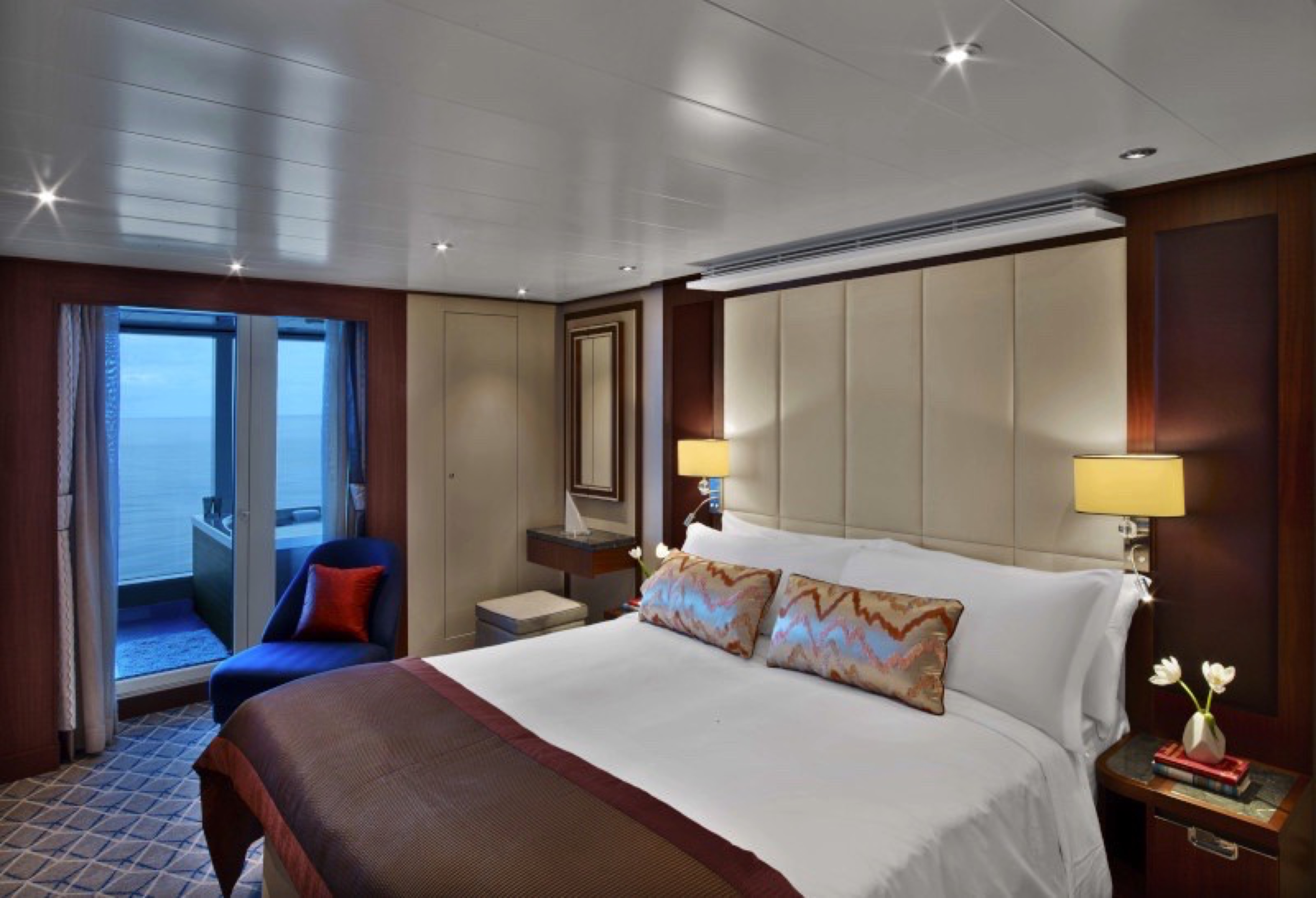
Located on Deck 8; Combine mid-ship suites 849 and 851 for suite 8491 or suites 846 and 848 for suite 8468 for a total inside space of 1,292 square feet (120 square meters) plus two verandas totalling 244 square feet (23 square meters)
Grand Wintergarden Suites feature:
- Large windows
- Dining for six
- Glass-enclosed solarium with tub and day bed
- Two bedrooms
- Two bathrooms (one whirlpool)
- Convertible sofa bed for one
- Pantry with wet bar
- Two flat-screen TVs
- Complimentary Internet/Wi-Fi service

Located on Deck 8; mid-ship suites 846 and 849 inside space of 989 square feet (92 square meters) plus one veranda of 197 square feet (18 square meters)
Wintergarden Suites feature:
- Large windows
- Dining for six
- Whirlpool bathtub
- Guest bath
- Convertible sofa bed for one
- Pantry with wet bar
- Glass-enclosed solarium with tub and day bed
- Two closets
- Two flat-screen TVs
- Complimentary Internet/Wi-Fi service.
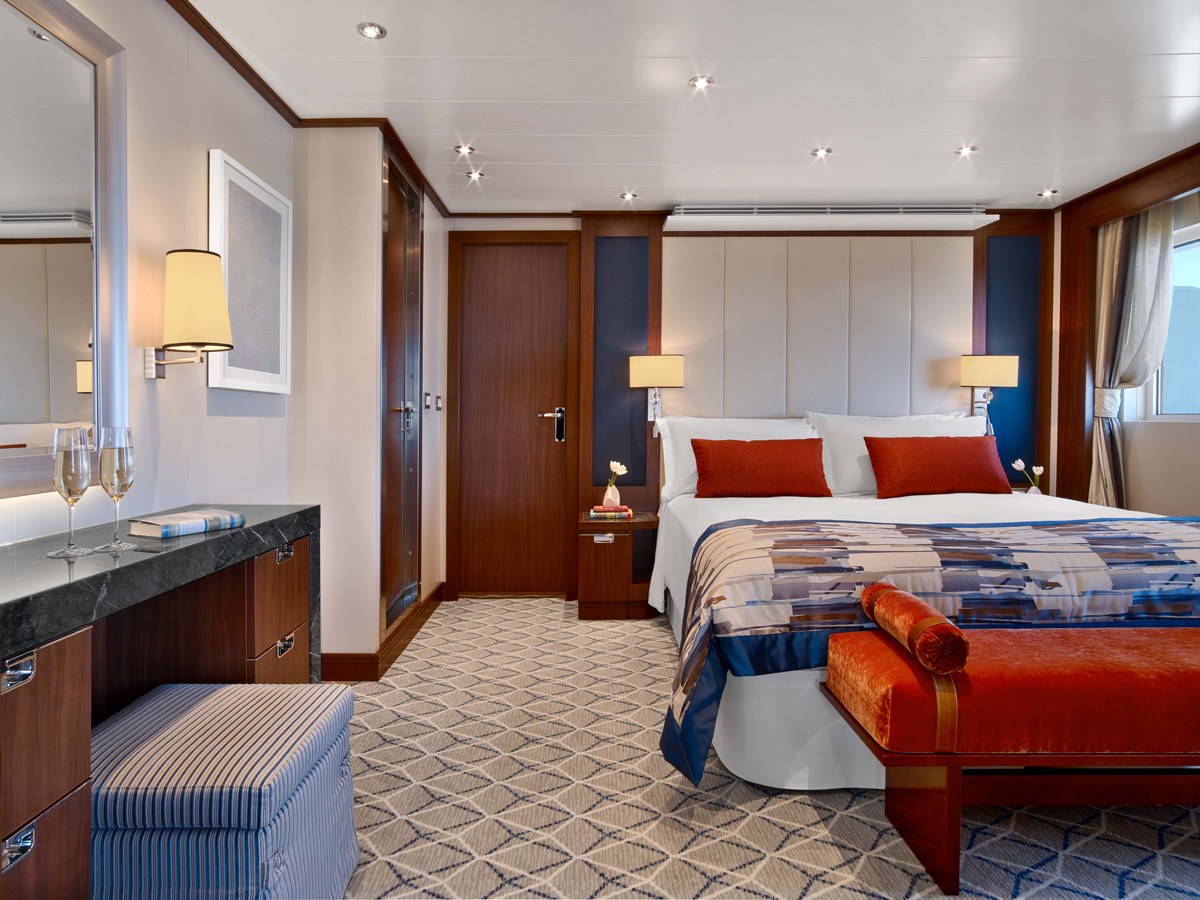
Located on Deck 8; forward suites 800 and 801 inside space of approximately 977 square feet of inside space (90 square meters), plus one veranda of 960 square feet (89 square meters).
Signature Suites feature:
- Expansive ocean views
- Forward-facing windows
- Dining for four to six
- Bathroom with whirlpool bathtub
- Guest bath
- Pantry with wet bar
- Two flat-screen TVs
- Complimentary Internet/Wi-Fi service

Located on Deck 7, 8, 9 and 10; total inside space of between 576 and 597 square feet (54 and 55 square meters) plus veranda of between 142 and 778 square feet (13 and 72 square meters).
Owner’s Suites feature:
- Expansive ocean views
- Forward-facing windows
- Dining for four to six
- Bathroom with whirlpool bathtub
- Guest bath
- Pantry with wet bar
- Two flat-screen TVs
- Complimentary Internet/Wi-Fi service.
*Wheelchair accessible suites are roll-in shower only.
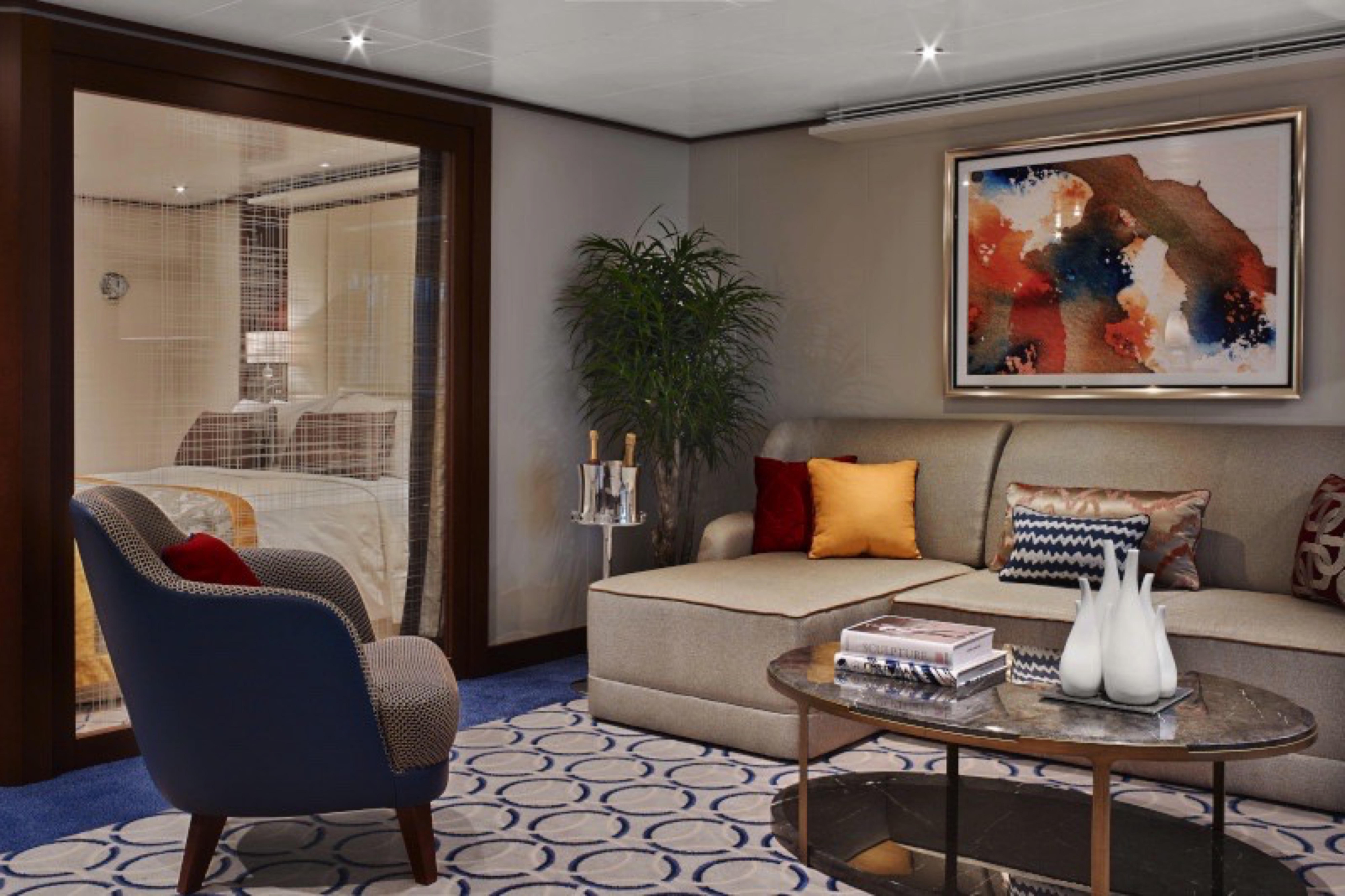
Located on Deck 11; total inside space of between 639 and 677 square feet (59 and 63 square meters) plus veranda of between 254 and 288 square feet (24 and 27 square meters)
All Penthouse Spa Suites feature:
- Dining table for two to four
- Separate bedroom
- Glass door to veranda
- Two flat-screen TVs
- Fully stocked bar
- Spacious bathroom with tub, shower and large vanity

Located on Deck 10 and 11; total inside space of between 449 and 450 square feet (42 square meters) plus one veranda of between 93 and 103 square feet (9 and 10 square meters)
All Penthouse Suites feature:
- Dining table for two to four
- Separate bedroom
- Glass door to veranda
- Two flat-screen TVs
- Fully stocked bar
- Spacious bathroom with tub, shower and large vanity

- Dining table for two to four
- Separate bedroom
- Glass door to veranda
- Two flat-screen TVs
- Fully stocked bar
- Spacious bathroom with tub, shower and large vanity
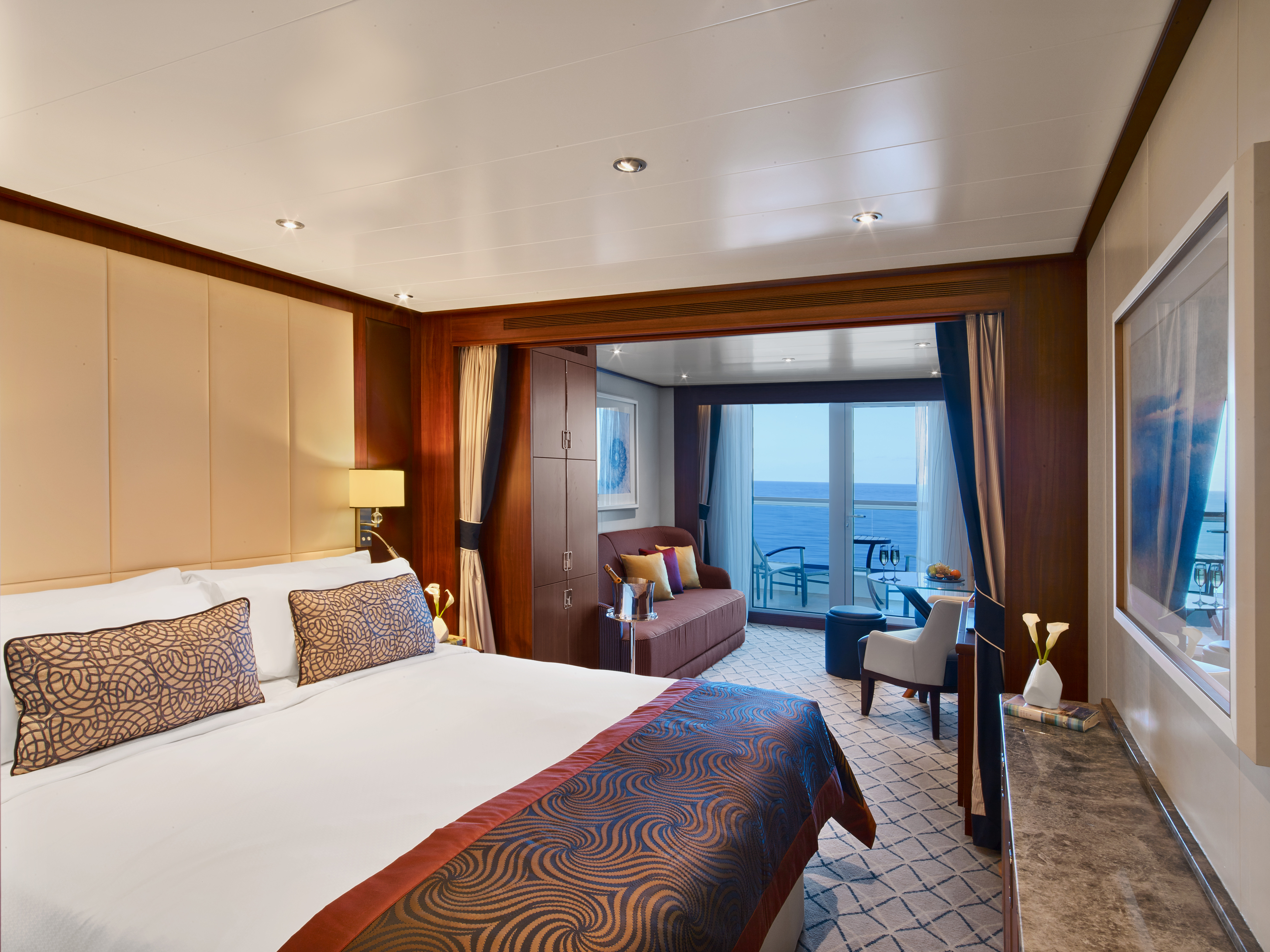
Total inside space of between 246 and 302 square feet (23 and 28 square meters) plus one veranda of between 68 and 83 square feet (6 and 7 square meters)
Guaranteed Suite: For this option we select the location and specific suite for you, and notify you prior to departure. Guests are guaranteed to be assigned a suite in the category selected or higher.
All Veranda Suites feature:
- A full-length window
- Glass door to private veranda
- Comfortable living area
- Queen-size bed or two twin beds
- Dining table for two
- Walk-in closet
- Interactive flat-screen television with music and movies
- Fully stocked bar and refrigerator
- Makeup vanity
- Spacious bathroom with separate tub and shower
*Wheelchair accessible suites are roll-in shower only.

Before Seabourn, open-seating dining on a cruise ship was unheard of. Come when you like, with whom you please, and be seated as you wish. The room is beautiful, the cuisine is exquisite, and the service is simultaneously flawless, friendly and fun.

Our more casual, indoor/outdoor alternative, features an open kitchen, lavish buffets or table service for breakfasts and lunch, and serves regionally themed, bistro-style dinners with table service nightly. At The Colonnade, special theme nights feature Chef Keller-influenced dinners that pay homage to his American childhood. His interpretations of classic comfort dishes, such as Clam Bake and BBQ Ribs will be served family-style on platters to complement the essence of sharing in a relaxed spirit of fun and togetherness. *Chef Thomas Keller influenced menu served family-style in The Colonnade are available for reservations once onboard.
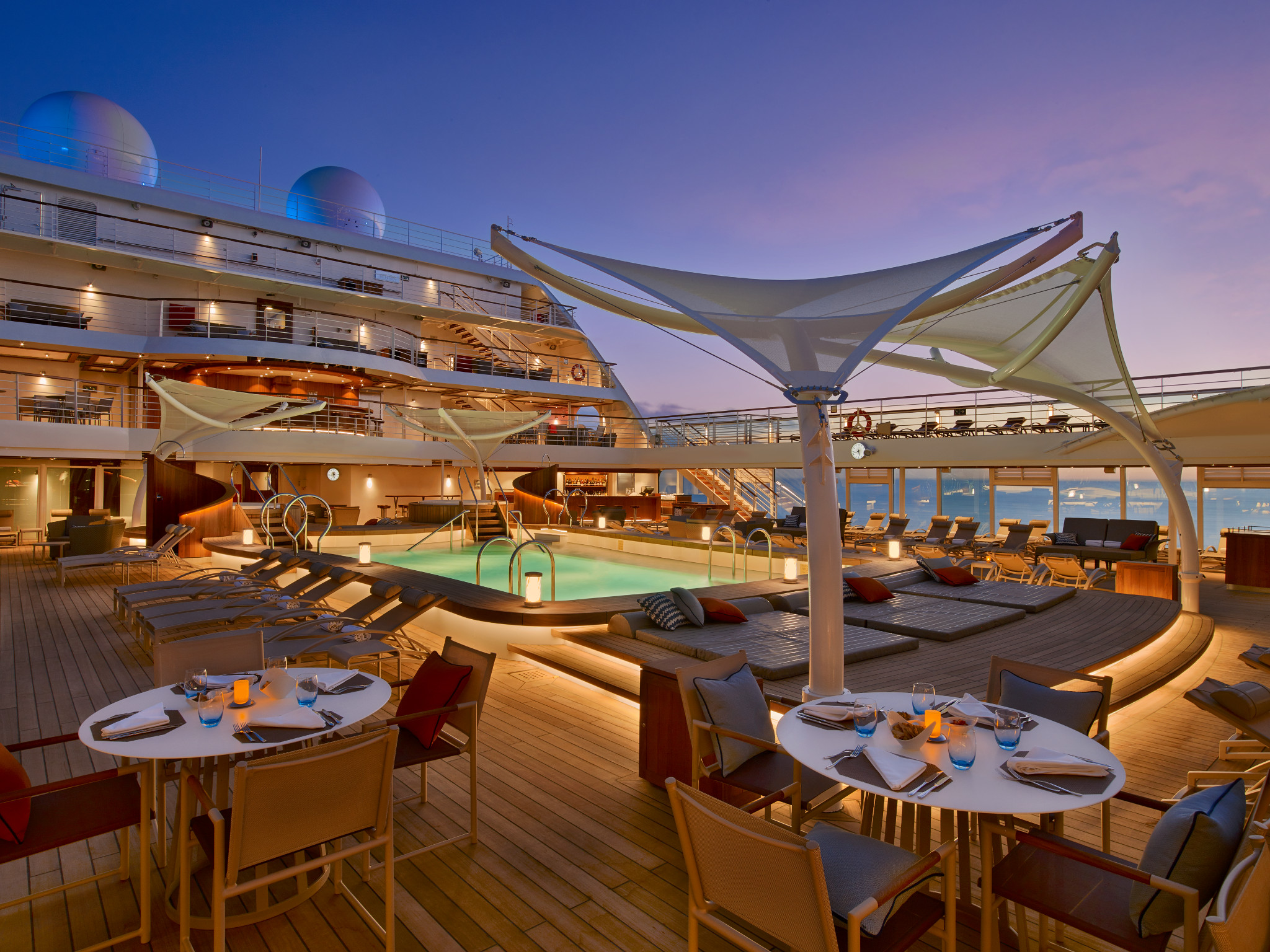
Relaxed poolside dining offering luncheon buffets, salads, soups, grilled specialties and freshly baked pizza. Dinners feature a full menu in an alfresco setting. For The Patio, Chef Keller has developed exclusively for us, a signature Napa burger, as well as an artisanal hot dog dubbed the Yountwurst, named for the hometown of The French Laundry, Ad Hoc, and the original Bouchon and Bouchon Bakery.
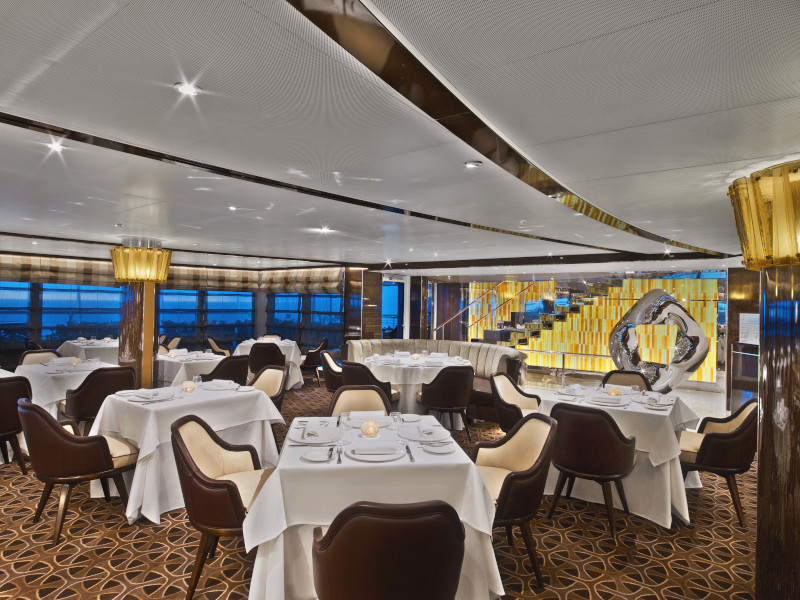
The Grill by Thomas Keller is a unique culinary concept for Chef Keller, exclusive to Seabourn. Guests setting foot inside the elegant dining room will be treated to table-side preparations of Caesar salad and ice cream sundaes as well as a range of other steakhouse favourites like Lobster Thermidor and creamed spinach, presented à la carte. The timeless menu will draw on the freshest products from artisan purveyors. A cocktail program and wine list of domestic and old-world labels complement the menu. For Booked Guests: Dining reservations for The Grill by Thomas Keller can be requested online prior to sailing, subject to availability. Online reservations close 15 days prior to sailing. Due to high demand, online reservations are recommended, however, reservations can also be made on board. One reservation permitted per voyage. For additional details or to make a reservation, log in and customise your itinerary.
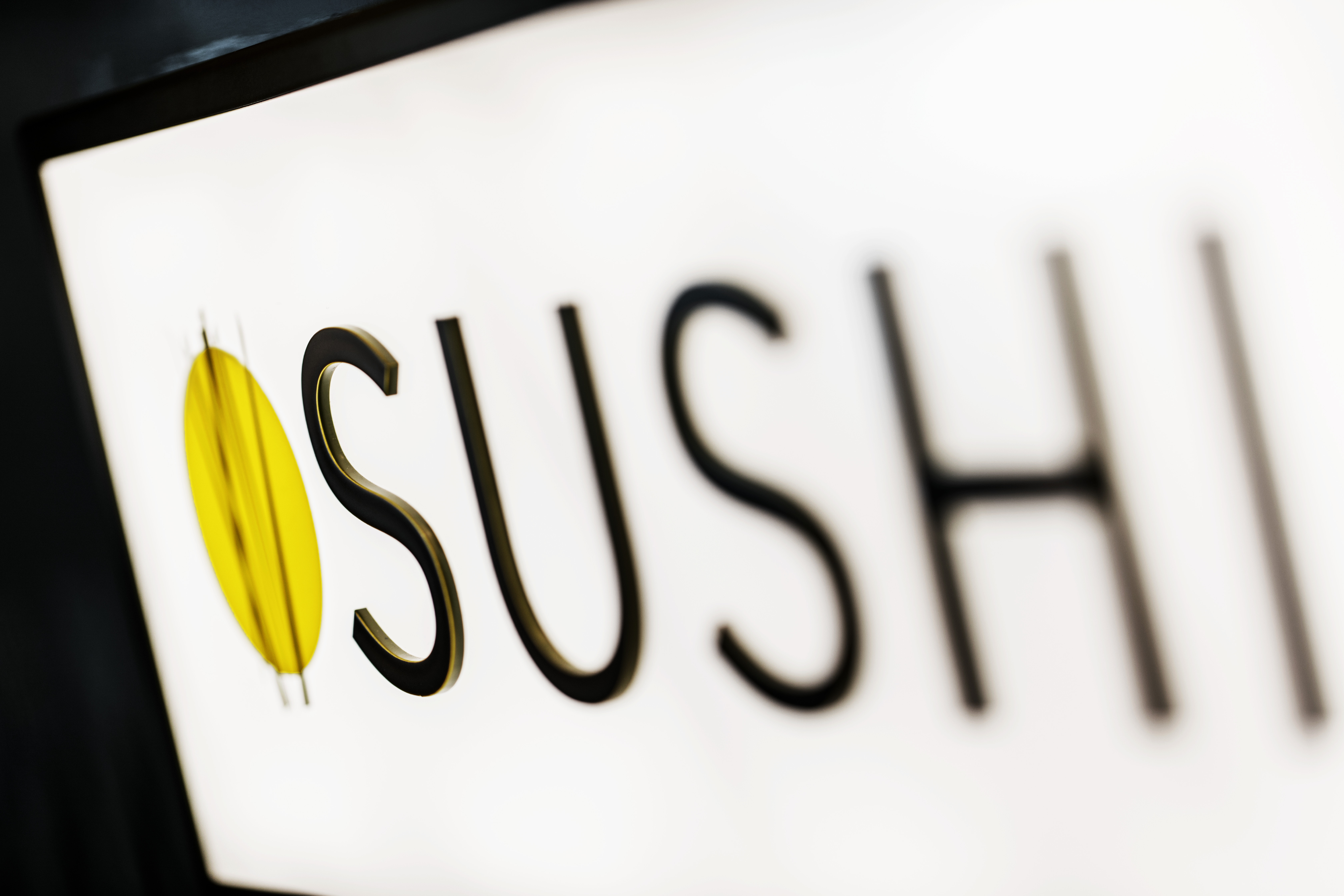
Seabourn researched the best ingredients and developed a menu that is a perfect blend of authenticity to maintain the root of the cuisine, and a twist of Seabourn’s culinary expertise. The sushi concept is a modern line that is steeped in tradition using the finest ingredients. Hamachi, tuna, shrimp and other fresh fish products will be shipped from Japan to Sushi and served à la carte for dinner. The menu features caviar and small plates, along with a selection of maki rolls, sushi and sashimi, and salads. In addition, the restaurant will feature three varieties of bento boxes for lunch: meat, seafood and vegetarian. Currently there are no plans to open Sushi on the existing fleet of Odyssey-class ships.
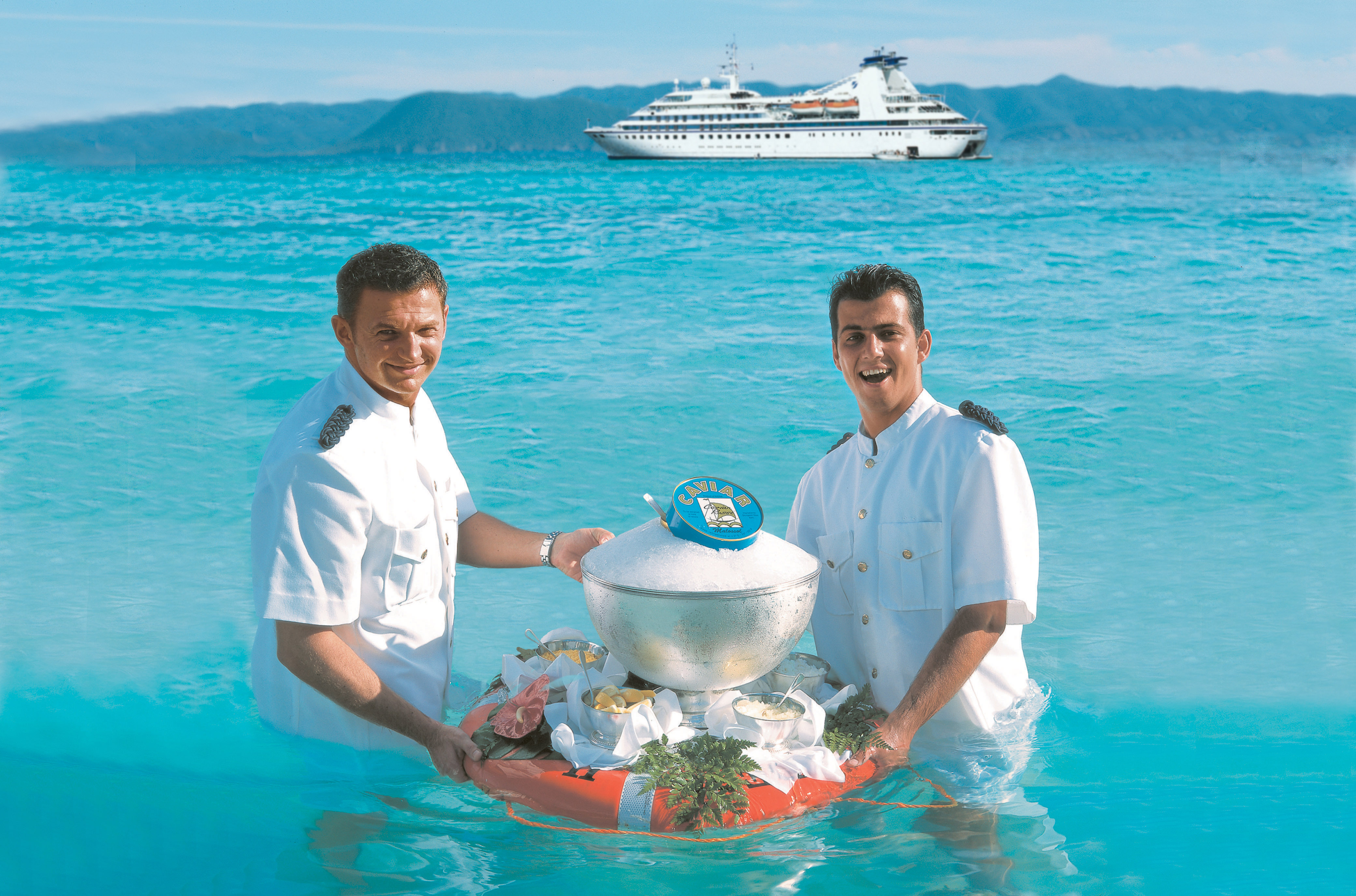
One of Seabourn’s most popular events is our signature “Caviar in the Surf” beach barbecue. Our uniformed staff members plunge into the water and invite guests to wade in and get iced champagne and caviar at a surfboard bar. The event includes a lavish barbecue lunch, water-sports, music and ample time to soak up the sun on a white-sandy beach.

Seabourn is pleased to offer a varied menu available around the clock for service in your suite. You may also order dinner from The Restaurant menu and have your meal served, course by course, in your suite or on your veranda.
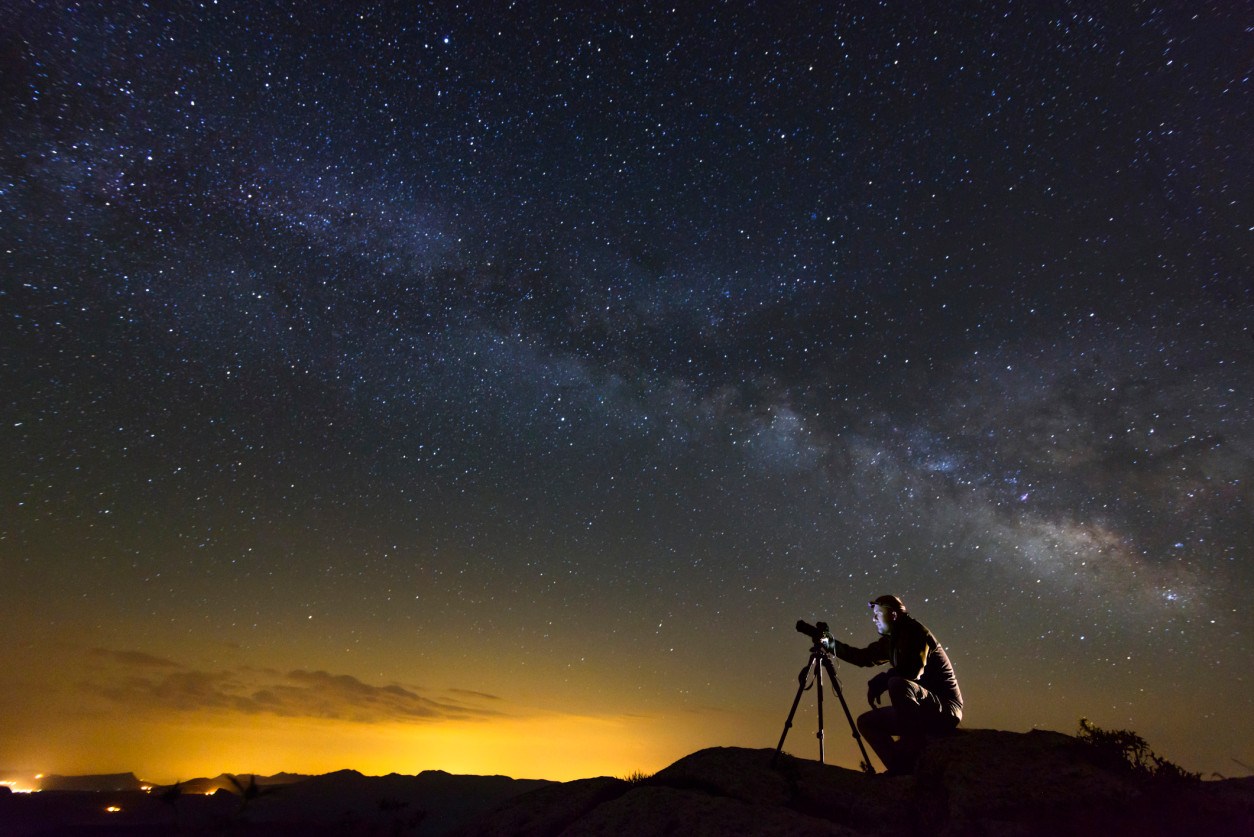
The art of conversation has always been central to the Seabourn experience.
World’s Finest Ultra-Luxury Cruise LineT™
Our voyages attract interesting, interested people — people who enjoy talking together, sharing their interests, their adventures and discoveries, and their life stories with longtime and newfound friends. Their enthusiasms and curiosity are far-ranging, and these are what spark their desire to travel the world.
To encourage and enhance this satisfying aspect of your Seabourn voyage, we invite luminaries of particular interest and accomplishment to join our guests on board — and bring fascinating insights, expert opinions and delightfully entertaining diversions to the conversation.
Daring explorers, heralded chefs, learned scholars, celebrated performers and renowned experts from every arena of the arts, sciences, politics and the humanities share your journey on our intimate ships. They each bring skilled presentations of their expertise for guests to enjoy. But just as importantly, they participate in the daily social scene, sharing meals, adventures ashore and casual chats throughout the voyage. On some ships, they lecture. On Seabourn, they join the conversation.

Seabourn is pleased to announce in partnership with The Onboard Spa by Steiner, we have created a fleet-wide mindful living program offering guests a holistic spa and wellness experience that integrates physical, social, environmental and spiritual well-being. The new Spa and Wellness with Dr. Andrew Weil program will be the first-ever of its kind at sea. The new program will be led by the newly established position, The Wellness Guide. The Guide, will be a certified yoga and meditation practitioner who will inspire and educate all guests through various complimentary classes and gatherings throughout the voyage. Guests who choose to participate in this new program will have a cruise experience that is further enhanced by a holistic mind and body perspective. The program kicked off with Dr. Weil sailing on Seabourn Encore’s inaugural cruise in January 2017. The program will be rolled out throughout the entire Seabourn fleet in 2017, including Seabourn Ovation in spring of 2018. Dr. Weil will sail on a different Seabourn ship each year where he will deliver a 60-minute lecture for guests and will also offer smaller informal group discussions. A separate team of wellness experts will also make regular visits to spa facilities throughout the Seabourn fleet. Central to the program is the daily practice of meditation and yoga through a selection of complimentary sessions. Guests can experience Mindful Meditation, which will introduce positive affirmations and mantras they can reflect on throughout the day. There will also be daily restorative yoga classes which will continue to focus upon the mantra and positive affirmations. Yoga classes will be varied, offering guests the ability to choose classes that focus on various physical issues, such as yoga to heal back and joint pain, headaches and body alignment, as well as yoga to enhance creativity, mental focus and happiness. Classes will focus on mind, body and spirit over a period of seven days, and will change daily with a new theme. Integral to the wellness program are enriching complimentary Mind and Body seminars designed to educate guests on philosophies and practices that are aligned with the program’s mission. Each presentation will aim to empower guests with ideas and practices that enhance well-being and increase the awareness of connection between mind, body, environment and wellness. Seminars are created by Dr. Weil and Steiner’s Wellness professionals, many of which will be based upon Dr. Weil’s teachings, and will explore the fields of the healing arts. The launch of the Mind and Body Wellness Program with Dr. Andrew Weil deepens the already wellness-focused Seabourn spa program that offers a wide range of body massages, facials, fitness and beauty treatments. Lending itself to the program is the powerfully aromatic Thai Poultice massages that use the traditionally prepared steamed herbs of Camphor, Kaffir Lime, Prai, Turmeric and Lemon Grass in muslin poultices to melt away stress and tension, or nourishing desecrated Coconut that nurtures the body with soothing fats and lipids. Guests will also find Deeper than Deep Hot Stone Massage, Bamboo Massage and Freestyle Massage to engage their minds and bodies.
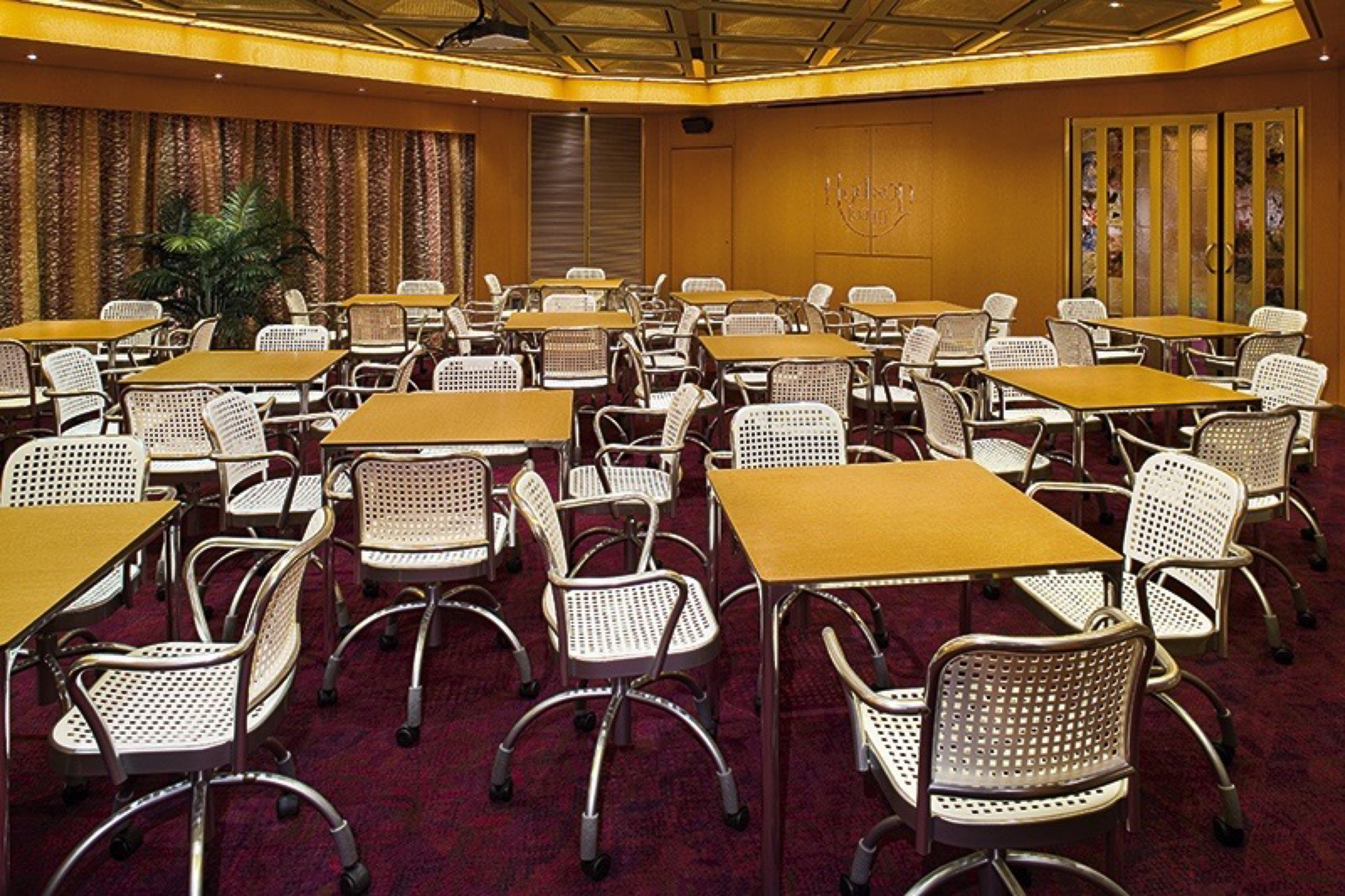
For meetings and gatherings, our ships offer meeting rooms that can accommodate up to 40 guests. The meeting rooms can be arranged to guests’ specifications including theatre-style or with tables; and each of the rooms have large-screen TVs for presentations. Guests may also reserve the Card Room when available. Our crew members are happy to assist guests with meeting room reservations and setup.

Shopping with the Chef — at local food markets. Shop a bustling Sicilian market, gather spices in Istanbul or explore the local wines of Tuscany and Provence. Wherever you are in the world, you’ll enjoy an insider’s look at unique regional markets with an expert Seabourn chef as your guide.

A place to enjoy your newspaper or to socialise with your fellow passengers, Seabourn Square is what you’re looking for. Seabourn Square is the true ‘living room’ of the ships. An inviting sociable space where guests will find a charming European style coffee bar, Seabourn Square has been designed as an open, comfortable environment for guests to interact with onboard officers and the expedition team and engage in conversation with family and new friends. The space is also home to the highly-trained Guest Services staff, who provide a range of concierge services such as general ship information, assistance with special service requests, port and travel information, and more.
A selection of coffees are prepared by the skilled onboard baristas some using beans roasted in Seabourn Square. For those feeling a bit hungry, Seabourn Square offers freshly made pastries and other on-the-go breakfast items in the morning, as well as an assortment of light sandwiches and desserts later in the day, along with a selection of artisanal gelati made on board. Guests will also find a wide range of books in the adjoining library, with a host of titles on subjects such as adventure, expeditions and other topics of interest to enjoy while onboard. Staying current with the news is made easy with a selection of printed newspapers from around the world and tablets featuring the Press Reader news application available to browse each day.
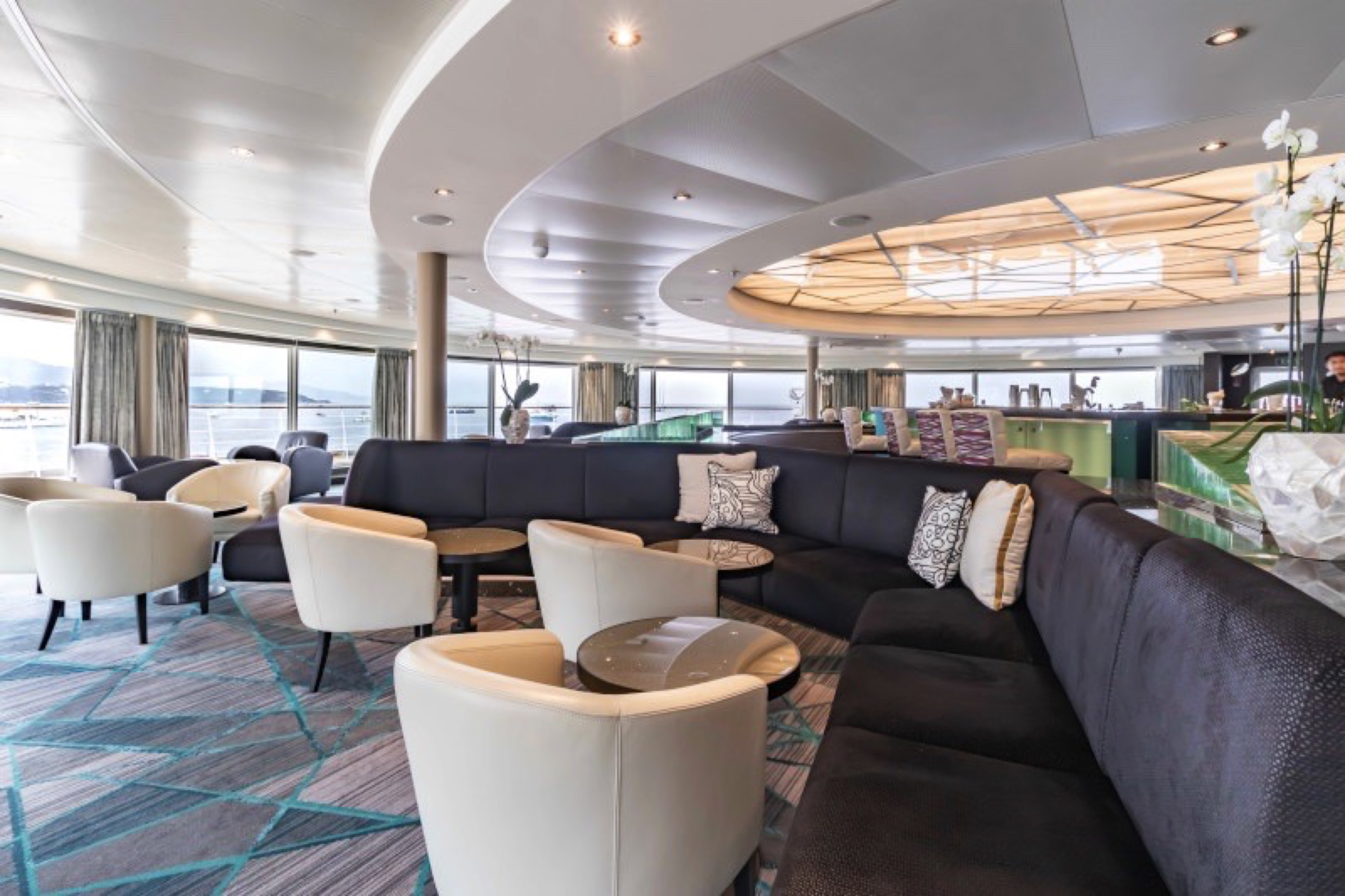
Enjoy this stunning lounge with a bar and panoramic views. Enjoy coffee and tea served every morning, and drinks before or after dinner.

World’s Finest Ultra-Luxury Cruise Line™
The Seabourn casino offers a handsome, well-appointed enclave for those attracted to games of chance and skill. Relax and test the odds on various mechanical games or pit your skills against personable, professional dealers at blackjack or poker tables.
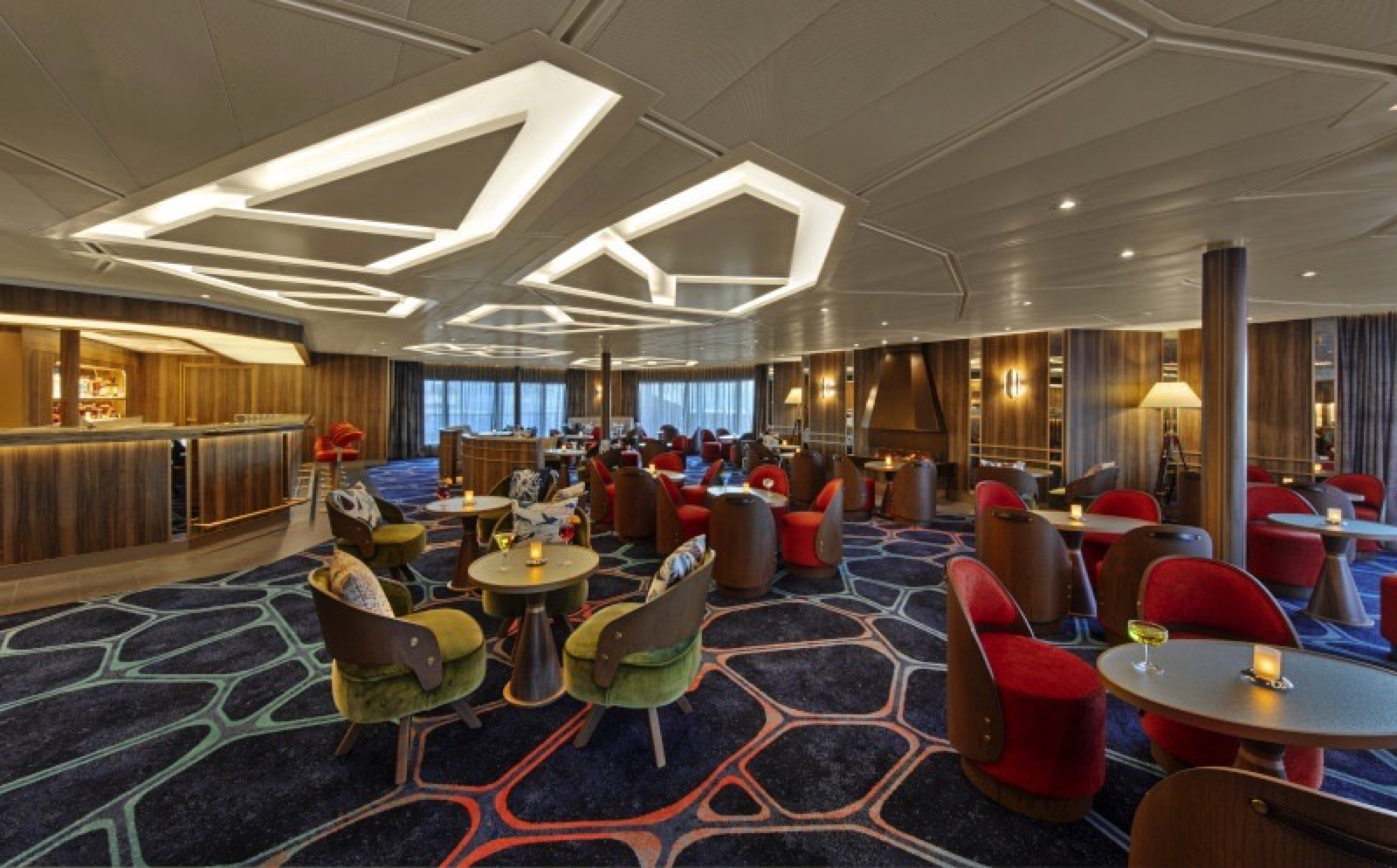
The liveliest lounge on board is the scene of daily afternoon tea service. It is a popular spot for pre-dinner drinks and dancing to live music. After dinner, the dancing music continues, and later a DJ spins dance music until late at night. Another terrace of open deck aft of The Club boasts a plunge pool and two small whirlpool spas.

The ship’s main showroom can accommodate all guests, though it seldom does because of the variety available. Lectures, cooking demonstrations, movies and other gatherings are held here in the daytime. In the evenings, live music for dancing before dinner gives way to vocal production shows, cabaret performances, comedy, and classical recitals, as well as more dancing later.

Some of Seabourn’s signature events take advantage of the beautiful night sky. On deck, you may take part in an energetic, musical Evening Under the Stars® — sumptuous barbecue dinners or gala parties with live music and dancing. The Rock the Boat nights are famous for high-energy dance music created by our entertainment staffs. Jazz or Blues nights are occasional jams featuring members of the ship’s bands. And Dessert Under the Stars is a category of culinary indulgence out of doors.
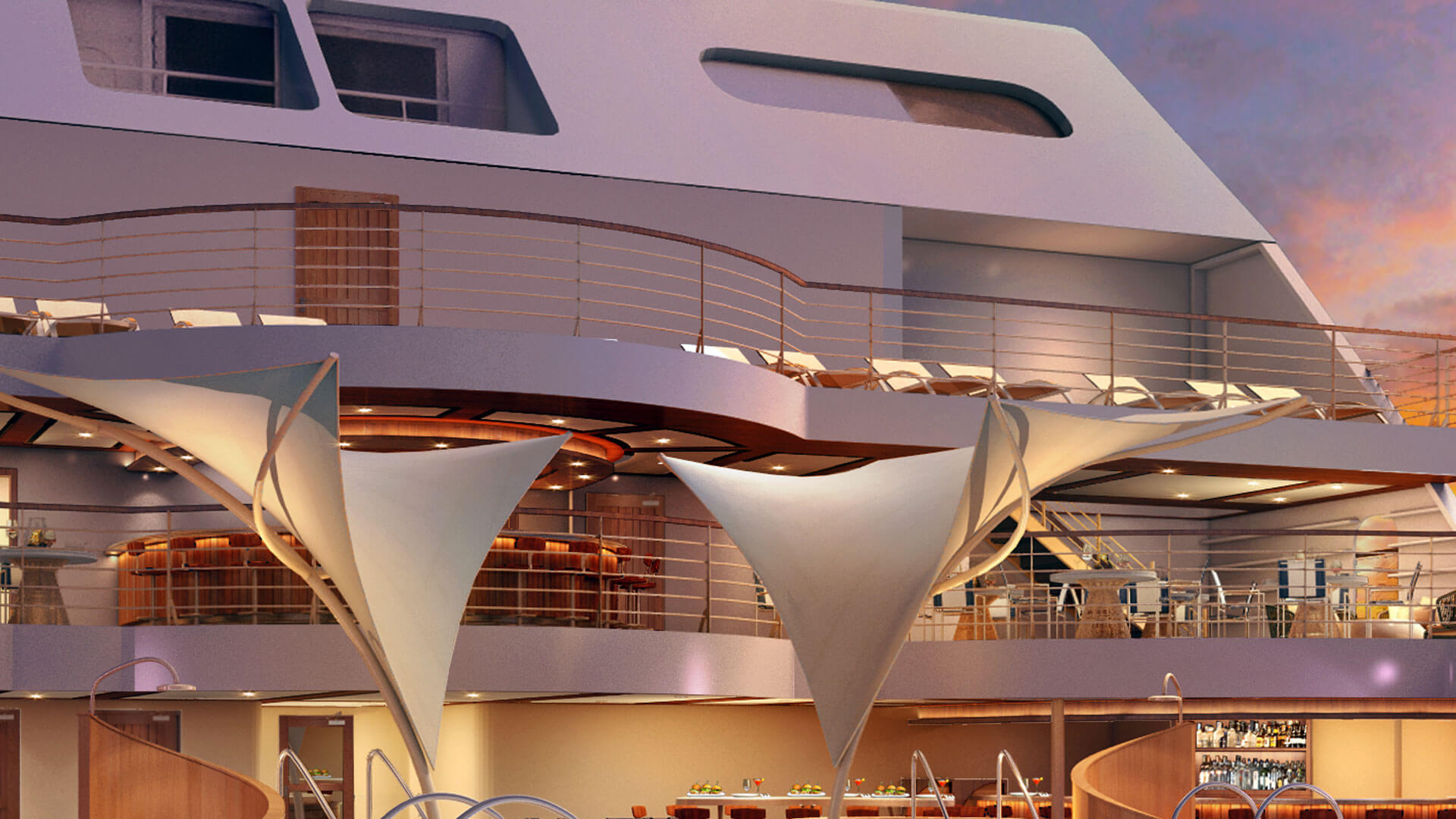
The Sky Bar is a place to enjoy a refreshing tropical beverage during the day, or an evening cocktail under the stars.
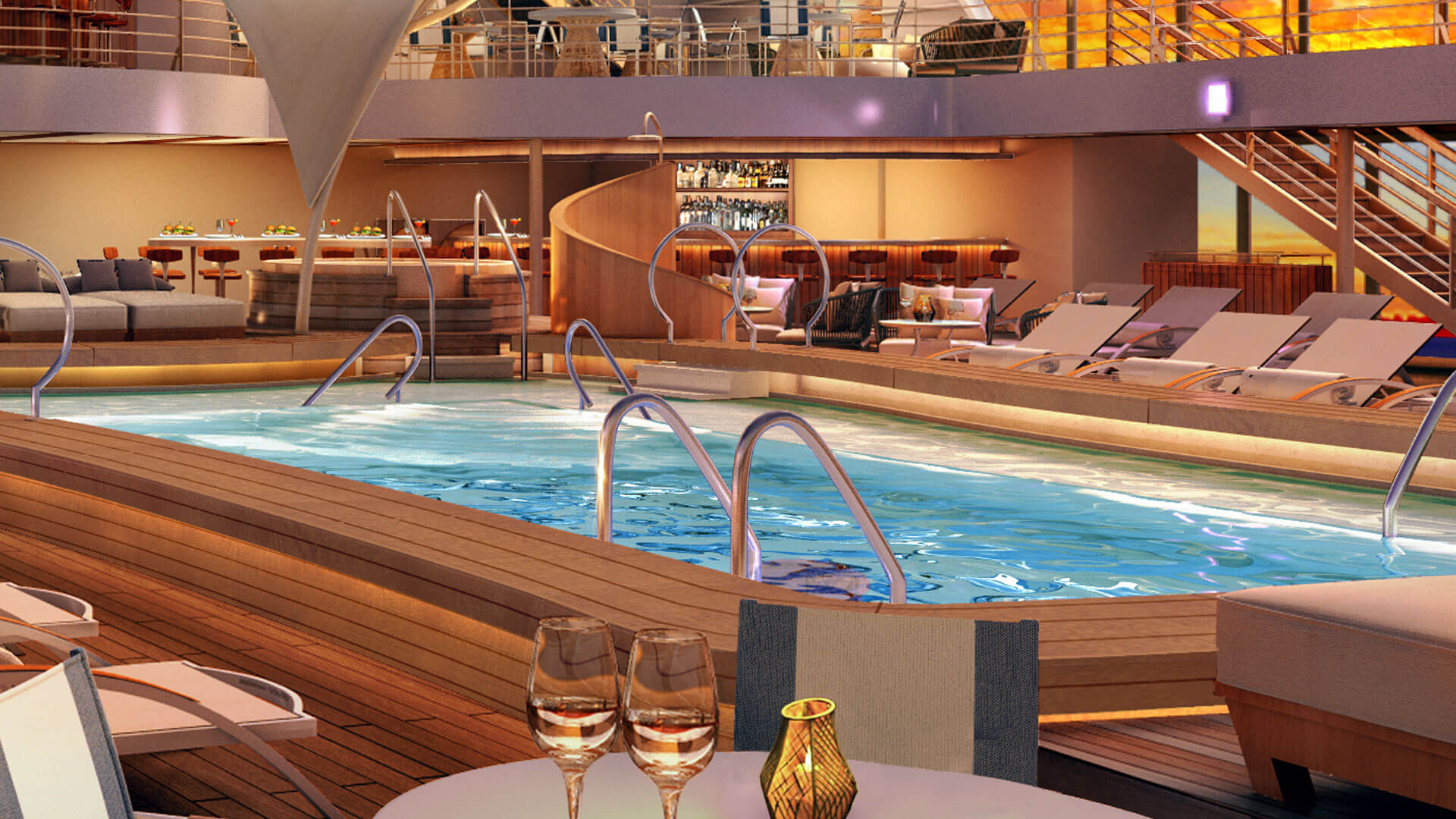
Offering the perfect setting for a sunny afternoon, the Pool Patio has everything you need for a day spent unwinding. The swimming pool is surrounded by a sundeck with chaise lounges, shaded seating, two large whirlpool spas, and is within steps of the Patio Grill and Patio Bar.

Whether you’re buying souvenirs for your friends at home or want a memento of your vacation, our Shops will have what you need. Shop for fashion and cosmetics at The Boutique, jewellery and fine watches at The Collection, or logo cruisewear at the Shop.

Afternoon tea is a tradition steeped in history and, one that has admirably stood the test of time. This inviting, social occasion, is perfect for catching up with friends on the day’s adventures or getting to know someone new. This new version, with white-glove service and live piano music features a range of quality teas and tisanes, all freshly brewed to your order, and a bountiful buffet of both sweet and savoury delicacies to tempt and satisfy every appetite.

A tranquil setting housed in a distinctive flower-shaped canopy that shields guests from sun and wind, The Retreat is ringed with 15 private cabanas designed as individual luxury living rooms that each feature a large HD flat screen television and a refrigerator stocked with a personalised selection of beverages. An additional Spa Treatment Cabana is also available for guests to enjoy personalised spa services, subject to availability. For additional details or reservation, log in and customise your itinerary.
The Retreat is located around a central whirlpool with step-up access to water maintained at an inviting temperature. Up to 28 guests can stretch out on comfortable sun loungers; pull up a bar stool or take a table seat for champagne and cocktails custom created by Seabourn mixologists; or enjoy a selection of bites from a healthy spa menu. A selection of amenities include fresh fruit baskets, premium sun lotions, Evian mist spray, plush towels and personalised bathrobes, while a dedicated Retreat Concierge will be available to satisfy guest requests.

Many veteran cruisers specifically choose cruises that provide at least a few days at sea. The Card Room is a great choice for the sea-loving cruiser who craves that languorous feeling of lazy leisure. There will be loads of on board activities during those days, including a great game of bridge.
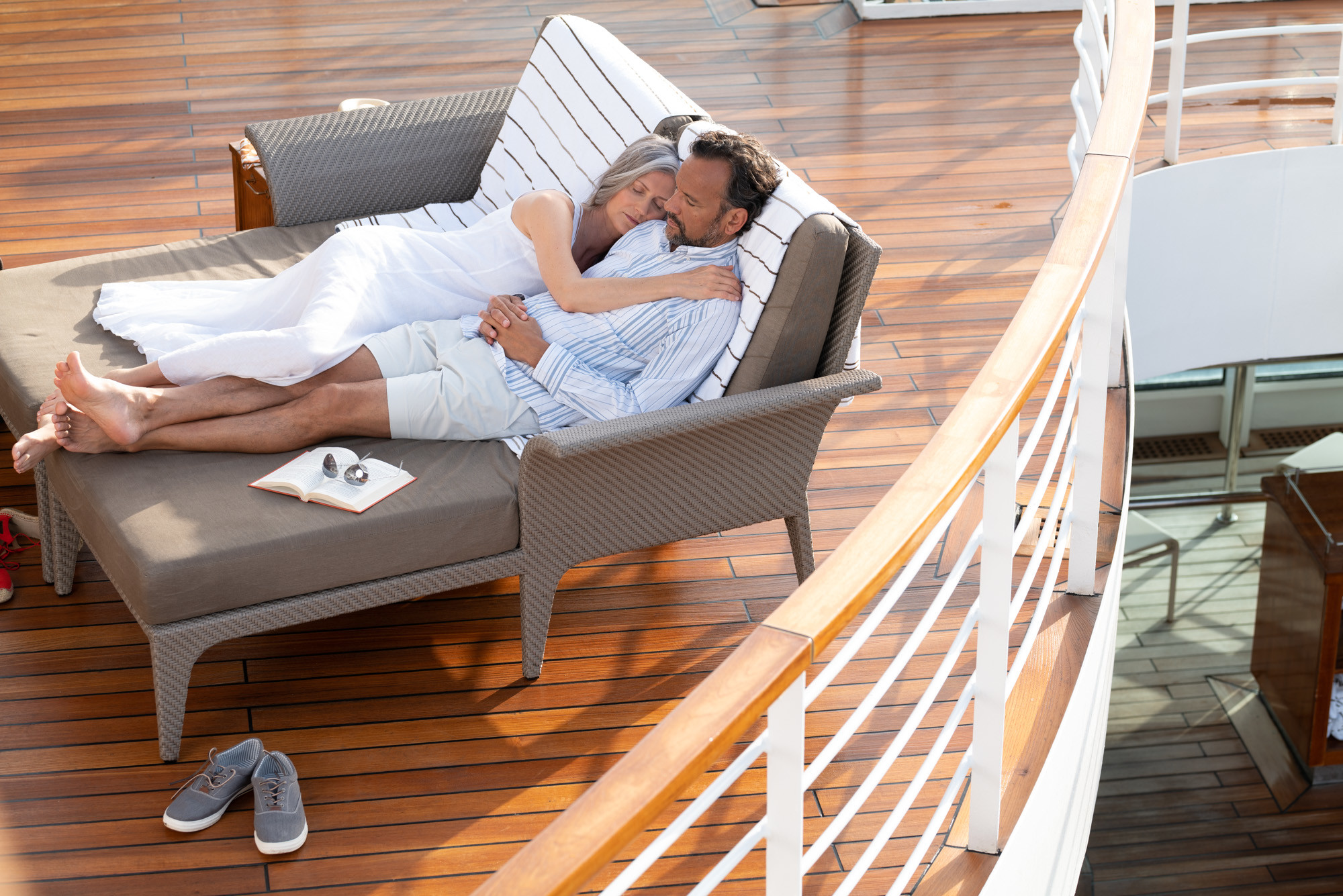
Sun Terrace with double sun loungers.

World’s Finest Ultra-Luxury Cruise Line™
Seabourn’s Spa & Wellness with Dr. Andrew Weil is the first-ever program of its kind at sea. Seabourn has partnered with Dr. Weil, a visionary pioneer in integrative medicine, whose groundbreaking research and bestselling books combine physical, social, environmental and spiritual well-being. Each Seabourn ship’s Mindful Living Coach is a certified yoga and meditation practitioner who will inspire and educate guests with orientations, seminars and classes during the voyage. Guests who participate in the Mindful Living Program will have their cruise experiences further enhanced by a holistic mind and body perspective.
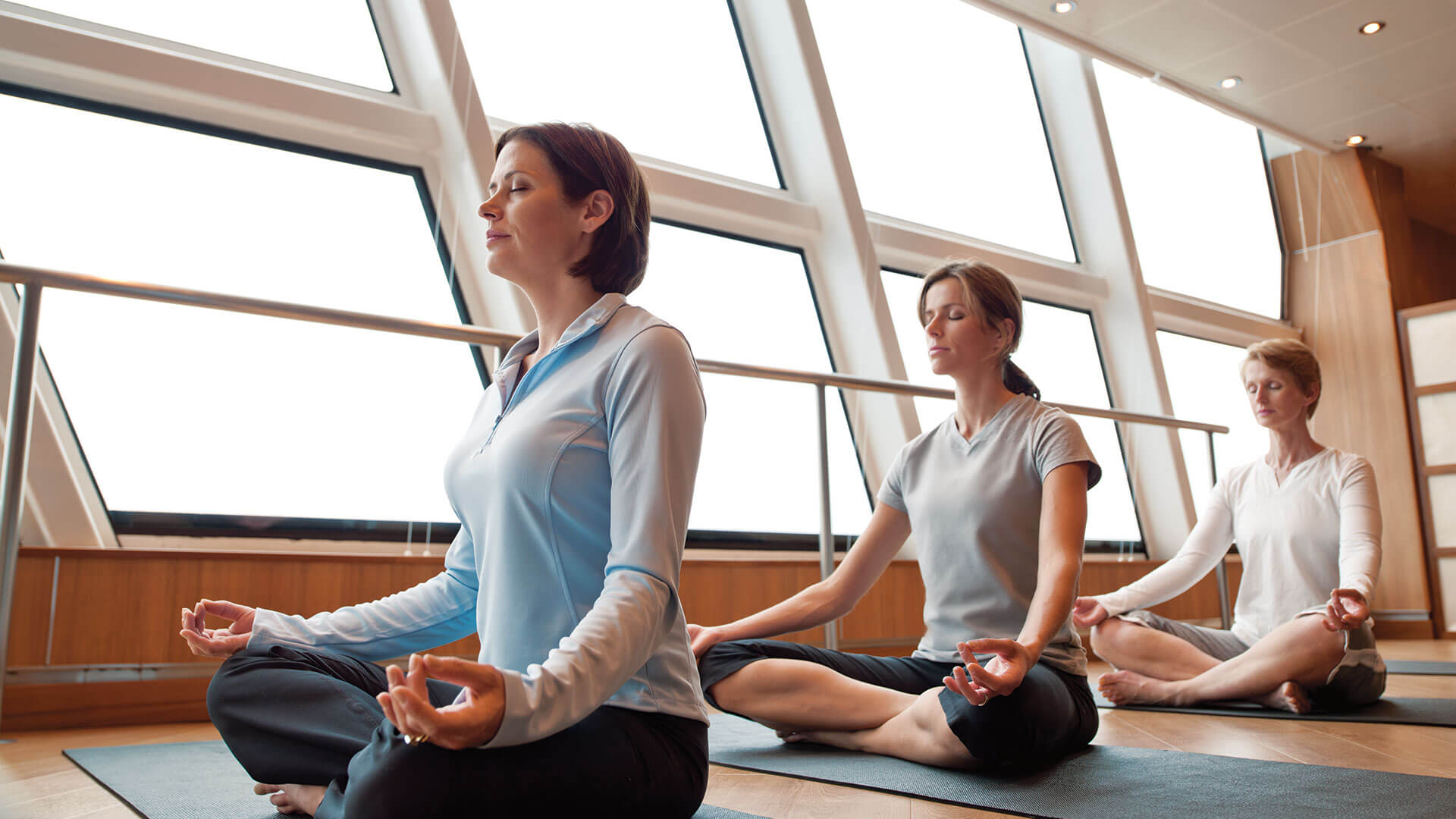
Our Fitness Center features high performance Technogym equipment for cardio and strength training. We also offer a series of complimentary classes including yoga, Pilates and Tai Chi. Or, if personal attention is preferred, our personal trainers will design a nutrition and exercise plan that will help you achieve results. Based on your body’s particular needs, this personalised session will expose you to the wellness program that works best with your body. Aboard Seabourn Odyssey, Seabourn Sojourn and Seabourn Quest you may try the Kinesis System. Using a tri-dimensional pulley system, our personal trainers will guide you through a series of exercises designed to improve balance, flexibility and strength.

Offering the perfect setting for a sunny afternoon, the swimming pool is surrounded by an expansive sundeck with chaise lounges, shaded seating, two large whirlpool spas, and is within steps of the Patio Grill. Sun loungers and cabanas are arrayed in a mix of sun and shade. A stage provides occasional live music for dancing.
Seabourn is committed to providing safe, easy, and accessible accommodations for all persons with disabilities, to the extent that is feasible. It is for this reason that Seabourn is honoured to be a part of Carnival Corp., which received the Society For Accessible Travel & Hospitality’s (SATH) “Access to Freedom” award. This award is the highest honour in the travel industry that SATH presents to recognise individuals or organisations that have made the greatest strides in advancing opportunities for persons with disabilities, and for promoting the awareness of, and access for, travellers with disabilities.
The Importance of Planning Ahead
Seabourn does not discriminate against individuals on the basis of disability. We seek, to the extent feasible, to accommodate guests with disabilities. However, some needs require adequate time to prepare for a guest’s arrival. It is recommended that guests make every effort to contact Guest Accessibility and to submit a Special Requirements Information form (SRI) well in advance of the departure of their cruise and/or cruise tour. We recommend submitting an SRI upon booking or a minimum of 45 days prior to departure.
Guests who are unable to care for their basic needs (e.g. dressing, eating, and attending safety drills) MUST have a capable traveling companion. The medical staff on board is not available for daily care unless an individual is hospitalised in the ship’s Medical Centre. In limited situations (either on board or ashore), we may find it necessary to ask the individual to make alternative travel arrangements, such as if an individual with a disability is unable to satisfy certain specified safety and other criteria, even when provided with appropriate auxiliary aids and services.
Our vessels have specially designed suites for guests who need mobility assistance. If you have not booked one of these accessible suites but instead will be using a standard suite you need to know about some limitations that adversely impact manoeuvrability, especially ingress and egress. Most entry doors and bathroom doors in non-accessible suites measure 23 inches wide. Bathrooms have a doorsill and the bathtubs are often difficult to negotiate for guests who have limited mobility. Passageways within the suite may be too narrow for a wheelchair or scooter to manoeuvre throughout the suite.
Accessible Suites offer features such as wider entry doors to the suite and bathroom measuring a minimum of 32 inches wide, accessible showers with grab bars, benches/seats, and hand-held shower heads as well as lowered closed and towel rods.
Accessible suite numbers are detailed in the section below by ship and their locations are noted on the deck plans for each ship within the “Onboard Life” section of this website.
Note: For safety reasons, mobility devices must be stored and charged in the guest’s suite.
If you are on an Expedition voyage click here for information. If you are on another Seabourn voyage please find the below information applicable to your cruise.
Seabourn Venture and Seabourn Pursuit
- Suites 825, 824, 800, 738 and 737 have transfer shower configurations.
Seabourn Encore and Seabourn Ovation
- Suites 1132, 1012, 664, 665, and 550 have transfer shower configurations.
- Suite 1191 has a roll-in shower configuration.
Seabourn Odyssey, Seabourn Sojourn and Seabourn Quest
- Suite 635 has a transfer shower configuration.
- Suites 913, 813, 815, 619, 619 and 408 have roll-in shower configurations.
Seabourn only permits service animals on board, defined as those animals that are individually trained to provide assistance to an individual with a disability. We do not permit our guests to bring pets, therapy/companion animals, and other animals that do not meet the definition of service animals. If you have any questions about whether the animal you wish to bring on board is, in fact, a service animal, you may contact Guest Accessibility.
Your itinerary may include ports of call that have very specific and strict requirements that need to be met prior to your service animal being allowed off of the ship. Please be sure you understand the requirements for a service animal to disembark in each port of call. The best places to obtain specific information on required documentation and immunisations for your service animal are the U.S. Department of Agriculture’s website, local customs offices in the specific ports, and from your service animal’s veterinarian. All documentation and immunisation requirements are established by government authorities and not by Seabourn. Should you need assistance in locating this information, please contact Guest Accessibility.
To board the ship, your service animal must have current vaccinations. Records confirming the vaccination status should be provided to Guest Accessibility prior to your departure. We also recommend that you carry the immunisation records with you in case they are required at any port of call. If you do not have the proper documentation and proof of vaccinations for your service animal required at a port of call, or if there are local quarantine requirements, your service animal will be denied the right to leave the ship. If your service animal is denied the right to leave the ship in a specific port of call, the staff and crew will work with you to determine what actions may be possible to allow you to visit the port without your service animal. Please note that in your absence, you will need to provide for the care and supervision of your service animal. Except in those circumstances where your service animal has been denied disembarkation, you may not leave your service animal unattended on the vessel or in your suite at any time.
The Australian quarantine authorities have changed their approach regarding service dogs on-board cruise ships. Unfortunately, their new approach makes it practically impossible for us to accept service animals on domestic or roundtrip cruises from Australia. The Department of Agriculture now considers these cruises to be akin to an international voyage and therefore under ‘biosecurity control’. As a company, we are incredibly disappointed with the Department’s new approach, and we have written to the Federal Minister to ask for a return to their previous way of doing things. At this time guests will not be able to travel with service animals on voyages that end in Australia or call upon a port in Australia after visiting a foreign country. Guests sailing on voyages that begin in Australia will be able to sail with their service animal provided the voyage does not return to Australia after visiting a foreign port. Should you have further questions please contact Guest Accessibility via email at Access@Seabourn.com.
For guests with food intolerances or allergies that are not life-threatening, please contact our Reservations Department. For guests with life-threatening food allergies, we ask that guests provide detailed information to Guest Accessibility by completing a Special Requirements Information form (SRI). Guests should indicate on this form which foods may potentially cause a severe reaction.
Guests with a variety of severe food allergies sail with Seabourn regularly. Our galley staff on board is accustomed to and experienced in dealing with these types of needs. The galley itself has many different areas of food preparation, which can help reduce the possibility of cross-contamination. It is important to note, however, that meals are prepared in open galleys on board the ships, thus there is always the possibility of some cross-contamination. As such, Seabourn cannot guarantee that a guest will not come in contact with those items. Although Guest Accessibility will provide the ship with an advance notice of all food allergies detailed on an SRI submitted to them, it is recommended that guests also contact the Maitre d’ upon boarding to review the details of these special dietary needs.
Guests under 21 years of age must be accompanied by a parent, guardian or chaperone who is at least 21 years old; one adult chaperone is required for every five people under age 21. A guest must be at least 6 years of age at the time of embarkation in order to sail on voyages to Antarctica or on Expedition Cruises. We will not accept reservations for infants 6 months or younger for non-transocean sailings, 12 months or younger for transocean sailings at the time the cruise commences. Seabourn cannot accept a booking or carry any guest who will be 24 completed weeks or more pregnant on the last day of the intended cruise. All pregnant women are required to produce a physician’s letter stating that mother and baby are in good health, fit to travel, and that the pregnancy is not high-risk.
Attire During the Day:
- During the daytime, casual, resort-style attire, including shorts and jeans, is welcome in all lounges and dining venues. Swimsuits, brief shorts, cover-ups and exercise attire should be reserved for poolside, on deck or in the spa and fitness centre.
In the evening (after 6pm) there are two different dress codes:
Elegant Casual
- Men: Slacks with a collared dress shirt or sweater; Jacket Optional.
- Ladies: Slacks / skirt, blouse, pant suit or dress. This is the dress standard for all dining venues
- Jeans are welcome in all dining venues during the day, but not appropriate in The Restaurant after 6pm.
Formal
- In the Restaurant, Men: Tuxedo, suit or slacks and jacket required.
- Ladies: evening gown or other formal apparel. Dress in other dining venues is Elegant Casual.
- Jeans are welcome in all dining venues during the day, but not appropriate in the Restaurant after 6pm.
The itinerary in the preliminary document booklet will inform you of the number of Formal evenings to expect during your voyage. As a rule of thumb, Formal evenings are scheduled as follows:
- Cruises up to 13 days: One Formal evening
- Cruises of 14 to 20 days: Two Formal evenings
- Cruises of 21 or more days: Three Formal evenings
(Note: Extended Explorations, Holiday voyages and crossings may be scheduled differently.)
Attire Ashore:
Packing clothing that can be layered is the best way to plan for cruising in virtually any climate. For tropical cruises, bring light, loose-fitting garments that can be paired with a lightweight jacket or sweater. For cooler climates, pack extra layers of warmer garments such as a light top coat and some sweaters. When dressing to go ashore, it is helpful to be aware of the customs of the countries you are visiting. In some ports men and women should not wear shorts. Many cultures prefer that women wear dresses or skirts when visiting shrines, churches, mosques and temples.
Some of our more adventurous destinations like Alaska and Antarctica voyages have additional special packing requirements.
- Packing for an Alaska Cruise
- Packing for an Antarctica Cruise
Please Note: Firearms, explosives, fireworks, other weapons and knives or sharp blades over 2.5 inches long and illegal drugs of any kind are prohibited without exception.
Full list of Prohibited Items
For safety reasons drones and any other remote controlled aerial devices/toys, as well as hoverboards or similar devices are not allowed on board our ships.
ON SEABOURN VENTURE AND SEABOURN PURSUIT:
We are implementing a “no smoking” policy on Seabourn Venture and Seabourn Pursuit, our two expedition ships, which includes e-cigarettes. Expedition travel visits many remote and rarely visited environments that are pristine, with diverse ecosystems and wildlife. We have implemented this policy to eliminate the possibility that cigarette butts and other smoking materials would end up harming the environment.
ON ALL OTHER SEABOURN SHIPS:
For the comfort of all guests, most public areas on board, as well as guest suites are smoke-free.
Cigarette smoking is permitted in the following areas:
Smoking of electronic cigarettes is permitted in guest suites. Smoking of water-pipes, glass-pipes or other smoking devices is not permitted on board. Smoking is not permitted on open decks during fuel bunkering operations in port.
Inside smoking of cigarettes is not permitted.
Outside smoking of cigarettes is permitted in designated areas of Seabourn Odyssey, Seabourn Sojourn, Seabourn Quest, Seabourn Encore and Seabourn Ovation:
- The designated smoking area for all ships is the starboard half of the Sky Bar open deck.
- Cigarette, cigar & pipe smoking is allowed on the starboard half of the Seabourn Square outside deck.
Guests are asked to refrain from smoking anywhere inside the ship, including in guest suites, on verandas and balconies. If you have any doubts about any area, please consult your onboard staff.
Any guest who smokes inside staterooms or on adjoining verandas in violation of our policy will be charged a US$250 cleaning fee per day of violation
Seabourn ships offer guests access to the internet by means of transmission between satellites orbiting approximately 20,000 miles above the earth and our mobile shipboard system. While this technology enables mid-ocean access in virtually every part of the world, satellite service is frequently noticeably slower and slightly less reliable than land-based methods of access due to the motion of the ship and limitations of bandwidth. There are two main reasons for this:
- The available bandwidth from satellite transmission is much lower than is available from most shoreside systems served by stationary cables with much greater bandwidth capacity.
- In addition, a shipboard system is typically serving a greater number of users simultaneously than most shoreside networks. Many shoreside users use wireless cell phone systems for internet access, further reducing demand on hardwired systems. Each user’s data transmission occupies a portion of the available bandwidth. More users means slower service.
For these reasons, we ask that guests not use internet service for high volume uses such as gaming, file sharing or streaming video content. The internet service on board is generally quite adequate for all guests’ usage when web browsing and sending or retrieving email.
Guests can access the internet either at terminals located in Seabourn Square, or wirelessly using their own wireless-enabled devices in most locations on board, including in guest suites, lounges and most areas on open decks.
Full laundry, dry cleaning (on selected ships wet-cleaning) and pressing services are available. Suite attendants take care of pick-up and delivery. Same-day service is available at extra charge if requested by 9:00 a.m. A complimentary launderette with washers, dryers, laundry soap and ironing facilities are available onboard all Seabourn ships..
Your ship’s small but modern basic medical facility is staffed by a doctor and a nurse. This facility is equipped to provide medical care for illness or accidents that may arise during the cruise, but is not intended to provide ongoing medical treatment. Since we are either at sea or in ports where availability of medical facilities and pharmaceutical products may be limited, we suggest you bring adequate supplies of prescription medications and other health-related items.
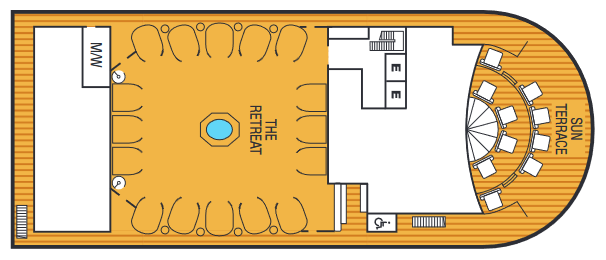
- Sun Terrace
- The Retreat

- Observation Bar
- Veranda Suite (x1 Accessible room)
- Penthouse Spa Suite (x1 Accessible room)
- Penthouse Suite

- Bridge
- Sky Bar
- Treatment Rooms
- Salin
- Spa & Wellness Area
- Thermal Area
- Motion Studio
- Fitness Centre
- Penthouse Suite
- Veranda Suite
- Owner’s Suite (x1 Accessible room)

- Whirlpools
- Pool
- The Patio
- Patio Bar
- The Colonnade
- Owner’s Suite
- Veranda Suite

- Sushi
- Card Room
- The Grill by Thomas Keller
- Wintergarden Suite
- Signature Suite
- Owner’s Suite
- Veranda Suite

- Whirlpool
- Meeting Rooms
- Shops
- Coffee Bar
- Seabourn Square
- Owner’s Suite
- Veranda Suite

- Grand Salon
- Veranda Suites (x2 Accessible room)

- Casino
- The Club
- Club Bar
- Pool
- Whirlpools
- Veranda Suites (x1 Accessible room)

- Medical Facility
- The Restaurant
- Galley
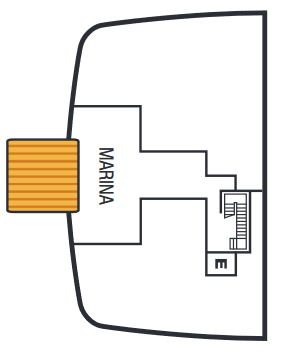
- Marina

